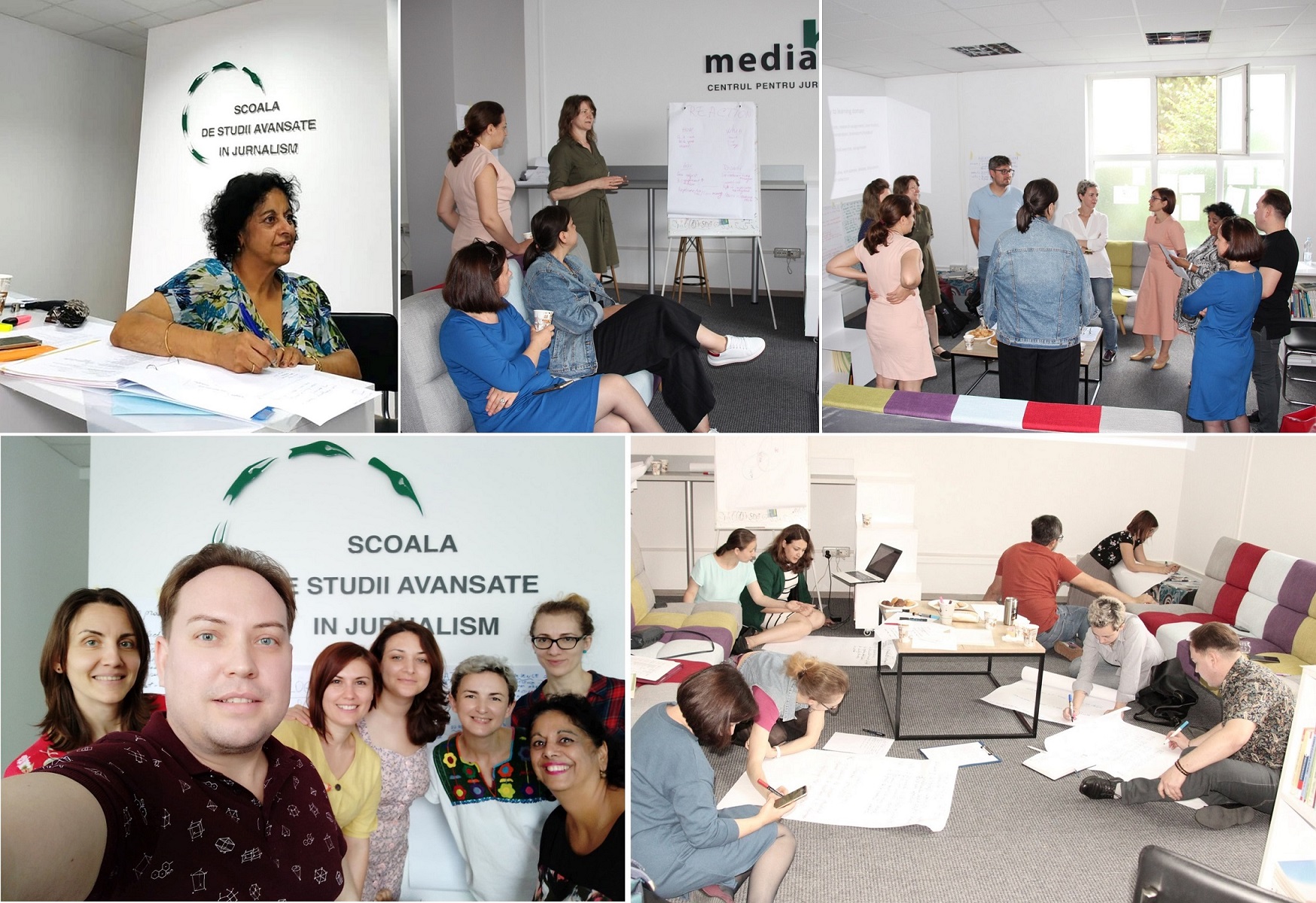A New Training Course for SAJ Instructors held by an International Trainer

How do we elaborate and implement a curriculum for training journalists? What are the key elements of curricular design? How do we correctly formulate the learning objectives and how do we achieve them in the training process? How do we select the activities for students, by combining more teaching /learning styles and the theory and practice? What is the influence of feedback on learning performance? And, applied to the SAJ, how to teach journalism in a more interactive, accessible and attractive way? These were the themes of a new Training of Trainers (ToT), which took place at the beginning of June and which was very useful for all the participants.
We have searched for the answers to the aforementioned questions and found them together with Abi Daruvalla, trainer and consultant at U2Media & Training4News in Amsterdam, the Netherlands.
The ToT lasted three days, during which there were discussed subjects related to the structure of a curriculum, the interconnection between three key areas of learning (knowledge, skills and attitude), the relevance of the courses, the adaptation to the needs of the media market and the new journalistic trends, the increasing of students motivational spectrum, the time management, the necessity of involving all the trainees in the activities performed by the trainer as well as logistical issues. Mentioning that all these must be in tandem with the ingredients required by a charismatic trainer – passion, integrity, organizational spirit, professionalism, humor, etc., but also interest in innovation, without which it is impossible to achieve performance.
The training was structured on a series of practical tasks. The SAJ instructors have worked in teams and individually to identify curricular needs according to their course, clearly formulate goals, select relevant, interactive and collaborative activities, and eventually update curricula according to a model proposed by the international trainer. The training has also been one of the opportunities to exchange good practice on current trends in journalism education. The participants talked about new methods, techniques and games that can be used in the journalism teaching /learning process, but also about solving potential problems in the trainer's relationship with students.
Finally, the participants came up with a personal feedback and learned how to provide constructively and encouragingly this feedback to the SAJ students.
Abi Daruvalla concluded that “Training is about creating an environment in which people can fulfill their own potential. That means not only sharing knowledge and skills, but motivating people to develop and improve their talents on all levels.”
